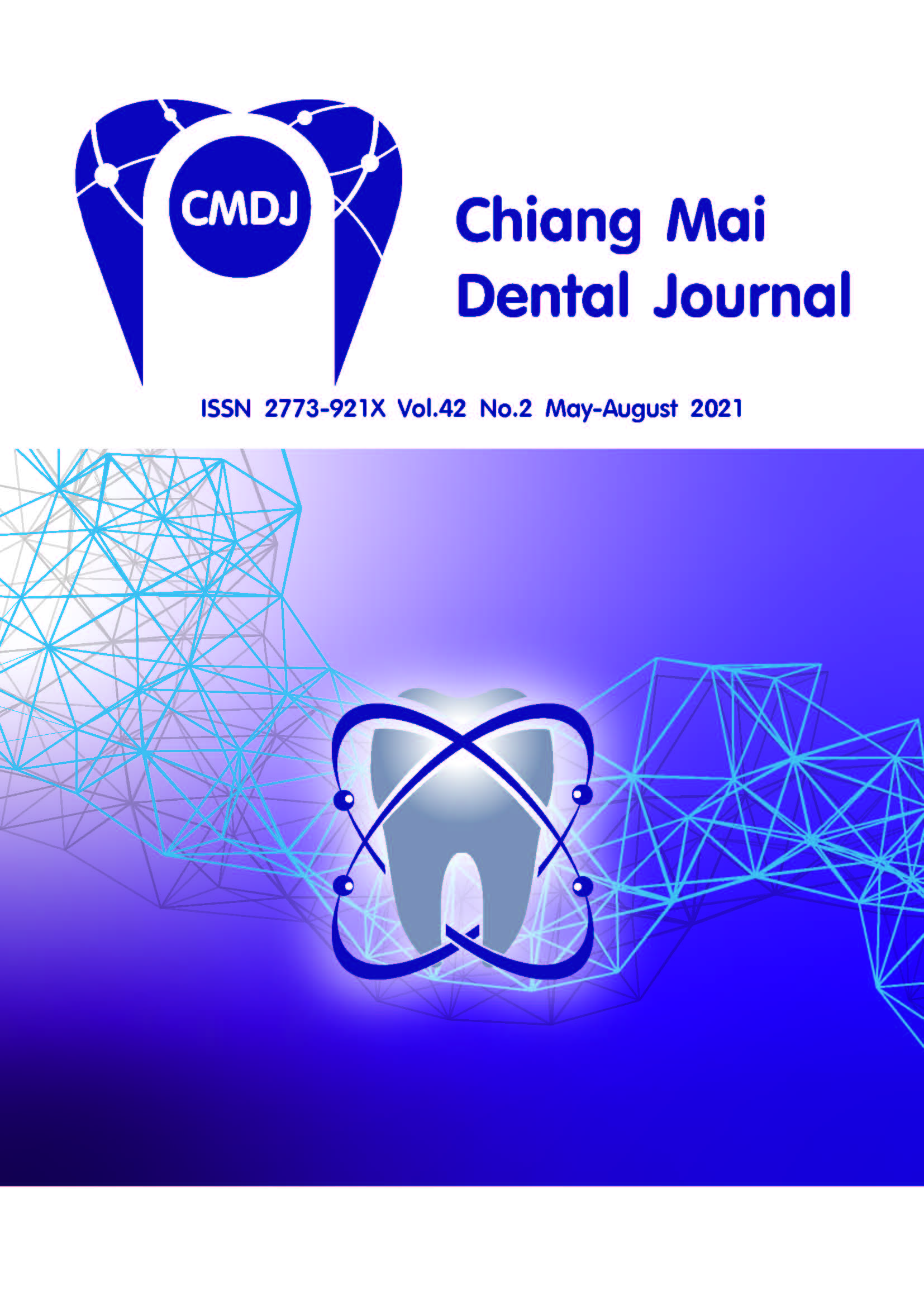The Important Facial Components for Facial Approximation: A Review of the Literature
Main Article Content
Abstract
Face is the structure that humans use to communicate and to verify personal identity. People learn the way to use their eye contact with others during social interaction in their culture, as well as remember the face during social communication. When using separate facial components to explore the developmental face recognition, the orders of successful recognition were the whole face, outer face, inner face, mouth, eyes, and nose, respectively. Therefore, this article informs the facial components that impacts for facial recognition, and thereafter are the components that are required to pay attention to facial approximation. The approximated face is made in order to elicit someone who familiar with the face to give the name and details of the deceased. Several studies found that the facial components that have error more than 5 mm in the three dimensional (3-D) facial approximations are the nose, eyes, chin, mouth corner and zygoma. The amounts of the differences in the facial approximation from the actual face that could allow in order to perceive accurate facial recognition are also suggested. In the future studies, the facial components would require new prediction models to improve the accuracy of the facial approximation for specific populations.
Article Details
References
Blais C, Jack RE, Scheepers C, Fiset D, Caldara R. Culture shapes how we look at faces. PLoS One 2008; 3: e3022.
Caldara R, Zhou X, Miellet S. Putting culture under the ‘spotlight’ reveals universal information use for face recognition. PLoS One 2010; 5: e9708.
Kelly DJ, Liu S, Rodger H, Miellet S, Ge L, Caldara R. Developing cultural differences in face processing. Dev Sci 2011; 14: 1176-1184.
Wheeler A, Anzures G, Quinn PC, Pascalis O, Omrin DS, Lee K. Caucasian infants scan own- and other-race faces differently. PLoS One 2011; 6: e18621.
Fu G, Hu CS, Wang Q, Quinn PC, Lee K. Adults scan own- and other-race faces differently. PLoS One 2012; 7: e37688.
Tan CBY, Stephen ID, Whitehead R, Sheppard E. You look familiar: how Malaysian Chinese recognize faces. PLoS One 2012; 7: e29714.
Hills PJ, Pake JM. Eye-tracking the own-race bias in face recognition: revealing the perceptual and socio-cognitive mechanisms. Cognition 2013; 129: 586-597.
Hu C, Wang Q, Fu G, Quinnd PC, Lee K. Both children and adults scan faces of own and other races differently. Vision Res 2014; 102: 1-10.
Tan CBY, Sheppard E, Stephen ID. Recognizing dynamic faces in Malaysian Chinese participants. Perception 2015; 45: 300-314.
Hills PJ. Children process the self face using configural and featural encoding: Evidence from eye tracking. Cogn Dev 2018; 48: 82-93.
Liu S, Anzures G, Ge L, et al. Development of recognition of face parts from unfamiliar faces. Infant Child Dev 2013; 22: 165-179.
Wilkinson C. Forensic Facial Reconstruction. Cambridge: Cambridge University Press; 2004.
Lee WJ, Wilkinson CM, Hwang HS. An accuracy assessment of forensic computerized facial reconstruction employing cone-beam computed tomography from live subjects. J Forensic Sci 2012; 57: 318-327.
Lee WJ, Wilkinson CM, Hwang HS, Lee S. Correlation between average tissue depth data and quantitative accuracy of forensic craniofacial reconstructions measured by geometric surface comparison method. J Forensic Sci 2015; 60: 572-580.
Short LJ, Khambay B, Ayoub A, Erolin C, Rynn C, Wilkinson C. Validation of a computer modelled forensic facial reconstruction technique using CT data from live subjects: a pilot study. Forensic Sci Int 2014; 237: 147.e141-148.
Miranda GE, Wilkinson C, Roughley M, Beaini TL, Melani RFH. Assessment of accuracy and recognition of three-dimensional computerized forensic craniofacial reconstruction. PLoS One 2018; 13: e0196770.
Rynn C, Wilkinson C, Peters H. Prediction of nasal morphology from the skull. Forensic Sci Med Pathol 2009 ;6: 20-34.
Mala PZ. Pronasale position: an appraisal of two recently proposed methods for predicting nasal projection in facial reconstruction. J Forensic Sci 2013; 58: 957-963.
Lewandowski Z. The influence of changes in size and proportion of selected facial features (eyes, nose, mouth) on assessment of similarity between female faces. Coll Antropol 2015; 39: 675-684.
Farkas LG, Katic MJ, Forrest CR, et al. International anthropometric study of facial morphology in various ethnic groups/races. J Craniofac Surg 2005; 16: 615-646.
Sforza C, Grandi G, Binelli M, Dolci C, Menezes MD, Ferrario VF. Age- and sex-related changes in three-dimensional lip morphology. Forensic Sci Int 2010; 200: 182.e181-187.


